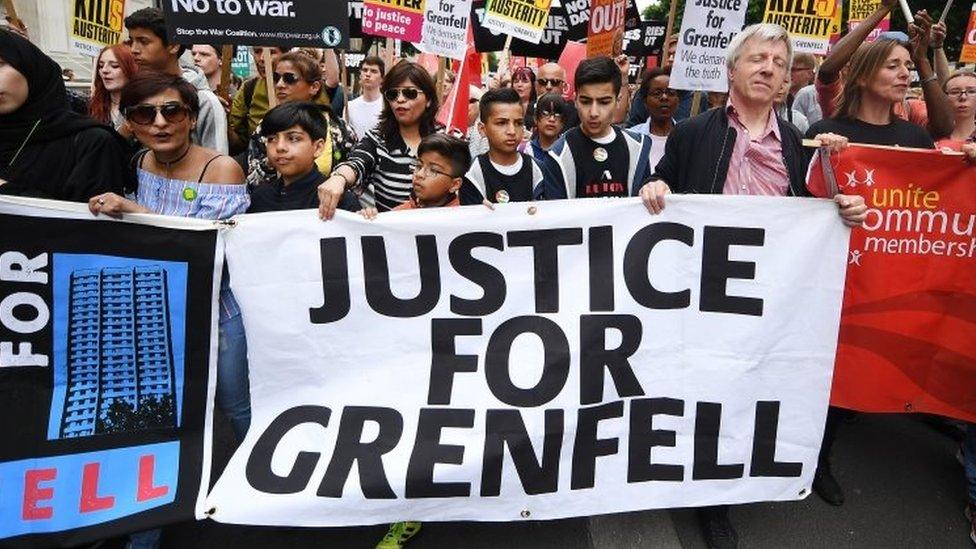Grenfell council gained £50m from affordable housing deals
- Published
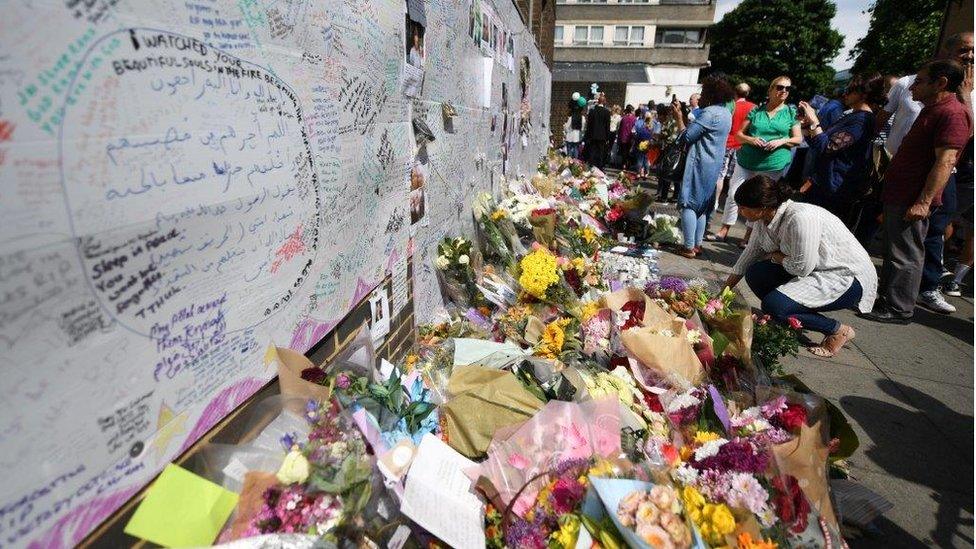
Kensington and Chelsea's approach to affordable housing has been thrown into question
The council that ran the Grenfell Tower block struck deals worth nearly £50m last year to allow developers to avoid having to build affordable homes, research for BBC News shows.
Kensington and Chelsea's own analysis shows it has built a fraction of the social housing the borough needs.
Developers can pay a fee if they can convince the council that affordable homes would make their plans unviable.
The council said it struggled to build affordable homes in a crowded area.
Kensington and Chelsea has been severely criticised for its failures over Grenfell Tower, including allegations that the regeneration of the tower was done on the cheap and that survivors of the blaze were not properly cared for.
At least 80 people died in the fire.
The disaster, in one of the richest areas in the country, has also thrown a spotlight on the council's attitude towards its poorest residents.
Huge shortfall
The council's policy is for half of homes in large housing schemes to be available for rent or sale at below market rates.
The official target is to build 200 affordable units - flats or houses - each year between 2011 and 2021.
But the council's own figures, external show that since 2011-12, just 336 units have been built; in 2012-13, just four were completed.
At the same time, Kensington and Chelsea struck deals with developers to pay it nearly £60m.
Since 2011, the council has agreed payments worth £59.7m, in what are known as Section 106, external agreements.
The council is allowed to charge developers a fee if their scheme would ordinarily be liable to include social housing but its backers can convince officials that to do so would make the proposal unviable.
That headline figure includes £47.3m in 2016 alone.
The figures have been calculated for BBC News by EG, a property consultancy firm, whose work includes researching planning committee reports for Section 106 payments.
Senior analyst Graham Shone said payment to the council had undergone a "step change" on previous years.
"Maybe the council is a bit more receptive to those kinds of agreements going through as a way to encourage development across the borough," he said.
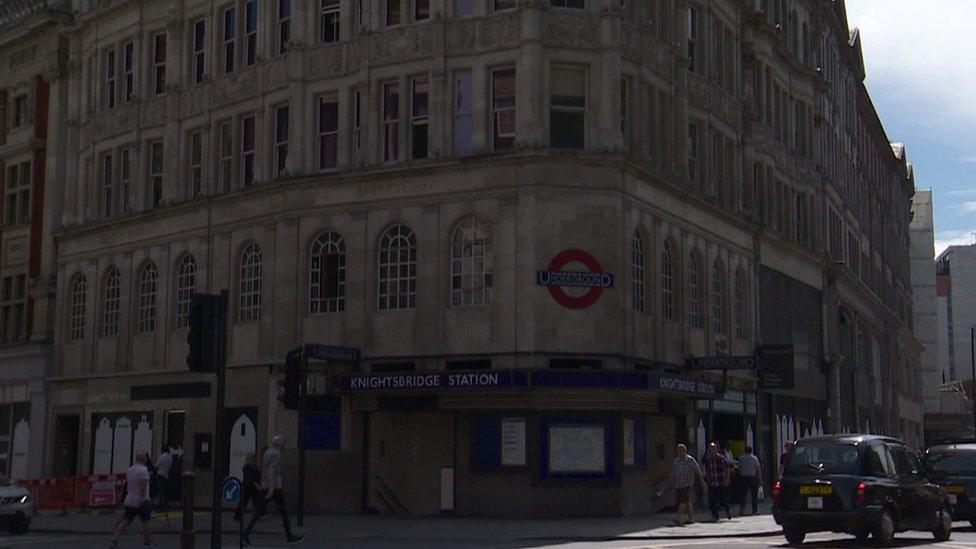
The council will gain £12.1m instead of affordable housing at Knightsbridge station

K1 development, Knightsbridge
Developers Chelsfield plan to "reinvigorate, restore and celebrate" the block above Knightsbridge Tube station.
The design includes retail outlets at street level, new offices, 35 residential apartments, an underground car park and a rooftop garden and restaurant.
Given the size of the development, to comply with the council's own policy, the scheme should include affordable housing.
However, in their planning application, the architects say: "The size of units [flats] are larger than what would normally be associated with affordable housing based on the London Housing Design Guide, external."
They also argue the service charge on the flats "would far exceed what would be a sustainable level for affordable housing".
And while they had considered creating another lift to accommodate affordable housing, this would "compromise" the retail units on the ground floor.
A mix of private and affordable homes, they say, is therefore "not viable".
The council accepted the arguments, passed the scheme, and will receive £12.1m in lieu of affordable housing at the development.

The payments are meant to help the council provide affordable housing in other parts of the borough or to renovate existing stock.
A paper prepared for the council's cabinet last year, external shows that of the nearly £21m the council has received since 2009-10 for affordable homes, £9.2m remains unspent.
Developers can also pay fees to off-set other impacts of their schemes. And the same paper shows that of the total £57.3m that Kensington and Chelsea has received since 2009-10, £36.7m has still not been spent.
None of the developers' contributions has been used to improve air quality, libraries, sports facilities or healthcare, and very little has been spent on employment initiatives or children's playgrounds.
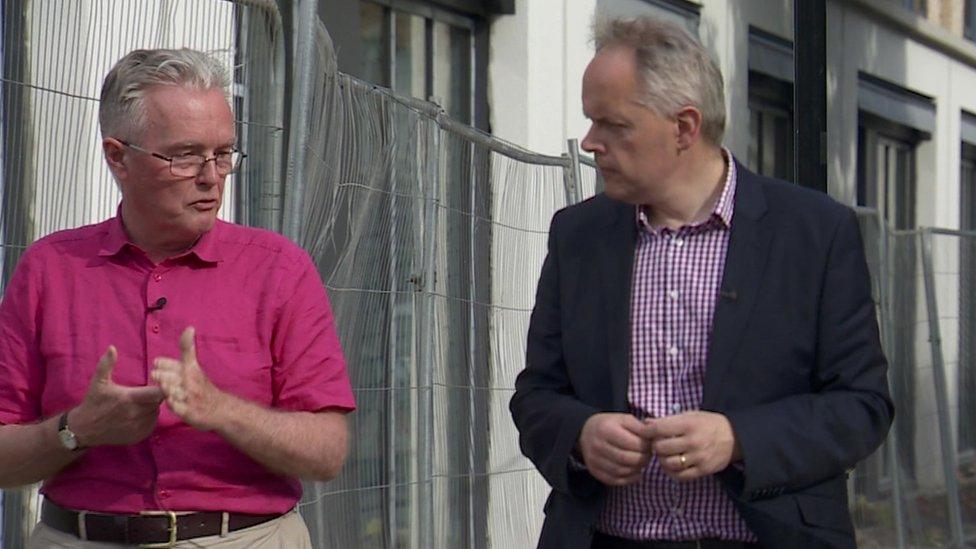
The leader of Kensington's Labour group says he is shocked by the lack of new affordable homes
Robert Atkinson, head of the Labour group at Kensington and Chelsea, said he was shocked by the amount of money the council was receiving and how few affordable homes were being built.
"One of the beauties of living in London is you have a balanced population, and I do think we have a duty not to produce the prettiest ghost town in Western Europe.
"Our first loyalty should be to maintaining and strengthening our communities, and we have fallen down on that job terribly."
The need for affordable housing in Kensington and Chelsea is acute.
A Freedom of Information request submitted by the BBC last year showed the council had spent £28m providing temporary accommodation to homeless residents in 2015-16, a figure that has doubled in five years.
Almost three-quarters of those people are being housed outside the borough - the highest proportion in London.
The council said that "as the smallest London borough", with the second highest population density in England and Wales and 4,000 listed buildings, "the borough only has a limited capacity to deliver housing".
A spokesman said its policy of allowing developers to negotiate on affordable housing "stems from government policy".
"The council scrutinises any viability information provided by the applicants in detail and in some cases is able to secure higher proportions than those proposed by applicants," he added.
- Published18 May 2018
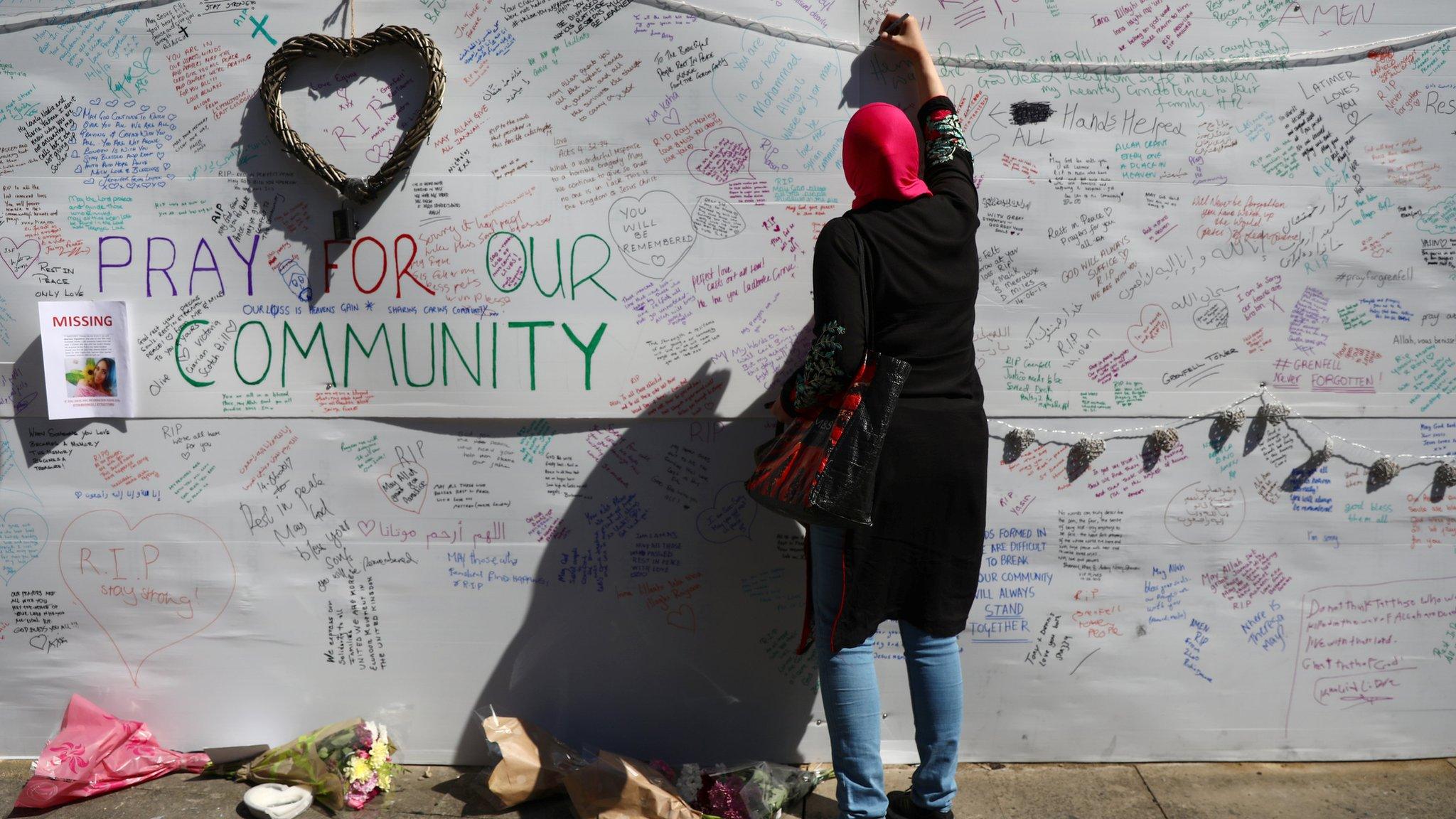
- Published1 July 2017
